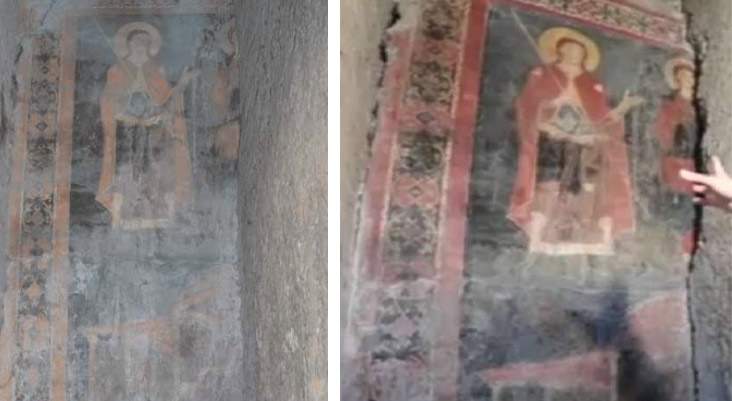St. Alexis fresco in Rome, existence was already known. But can it be called a hoax? Here's how things stand
Immediately after news broke of art historian Claudia Viggiani’s discovery of a fresco depicting St. Alexis and the Pilgrim Christ in the church of Sant’Alessio in Rome, denials immediately came from Rome’s Archaeological Superintendency, which let it be known that in fact the work had been known for years. “The fresco that resurfaced from a cavity in the church of Sant’Alessio all’Aventino had been discovered several years ago,” said Superintendent Prosperetti. “The Special Superintendency of Rome, has screwed together a project of study and restoration on the painting, with also hypotheses to make it usable, at the end of which it will present it to the press. I do not hide a certain embarrassment to read about exclusive news, because Dr. Claudia Viggiani, who divulged it, also works for the Superintendence but is not part of our organic plant. Therefore she should have agreed with us on any statement.”
So the work was already known, but is this enough to talk about a hoax as several newspapers are already doing? Let’s see how things stand. That there is a recently discovered fresco is true, just as it is true that the fresco is truly exceptional. And the author of the “rediscovery” is Claudia Viggiani herself (the term “rediscovery,” by the way, was used by her), the first art historian to deal with the work, and who, however, had already published the painting in a scholarly article in the journal Arte Medievale in 2006.
The article just cited also illustrates the stages that led to the discovery of the fresco: in particular, its existence was ascertained as early as 1965, when the Genio Civile of Rome wrote to the Superintendence of Latium that it had found a fresco in an excellent state of preservation, but without further specifications. However, the fresco, as Claudia Viggiani herself specified in another of her 2018 articles, was studied by art historian Luigi Salerno and restorer Giuseppe Pittà. However, the City of Rome, after the discovery, had ordered the Genio Civile to restore the “status quo” prior to the work that led to the discovery, so nothing more was known about the fresco until Claudia Viggiani’s new studies.
What then is the news? The first is the fact that the discovery had been published only in scientific circles, but no one had told the general public about it. The second, that the restoration was actually recently completed. To be generous, one can add the fact that the 2006 study mentioned “Saints Boniface and Alexis,” while in the 2018 study, thanks in part to the restoration conducted by Susanna Sarmati, Viggiani proposed identifying the figures as Saint Alexis and the Pilgrim Christ, which if confirmed would be a very rare iconography (the identification is therefore recent). Of course, it is very little to present the discovery as having just occurred, but the news cannot be branded as a hoax either. Not least because, moreover, nowhere in the written interview nor in the video does Viggiani assert that this is a recent discovery, quite the contrary: in the Ansa video, the art historian clearly says that her work began in 2005 and does not claim that the discovery is a last-minute event. So it remains to be understood who decided to use bombastic tones to communicate the discovery, and why.
Pictured: the fresco before and after restoration
 |
| St. Alexis fresco in Rome, existence was already known. But can it be called a hoax? Here's how things stand |
Warning: the translation into English of the original Italian article was created using automatic tools. We undertake to review all articles, but we do not guarantee the total absence of inaccuracies in the translation due to the program. You can find the original by clicking on the ITA button. If you find any mistake,please contact us.





























